About
The tumultuous and dramatic social and political changes which took place across Europe in the 18th century produced some of the most remarkable developments in the visual arts of any century. One major shift was the rapid increase in the number of people involved in the consumption, and therefore production, of art. More people saw, owned and commissioned works of art in the 18th century than at any time previously.
This course will chart the passage of the visual arts through this turbulent period. It will take in the frivolity and humour of the Rococo, the profound impact of the discovery and dissemination of Roman and Greek statuary, debates over the relative merits of national art styles, particularly in Britain, the waning influence of royal and aristocratic patronage in the face of a rapidly rising middle class and the relative austerity of Neoclassical art.
Across Europe, questions concerning the role of art within society, the role of the artist and the role of those who viewed art, remained central and will be themes that we return to throughout this course. Unevenly and at different times, political and economic power began to slip from the complete control of European monarchs and aristocrats. Meanwhile, questions of taste, previously bound up with ideals of nobility, became entwined with notions of popularity. We will see in this module that art in this century both reflected, and distracted, from stark and brutal changes.
Find out more about 'Stories of art' and upcoming modules.
Week 1: A lighter touch
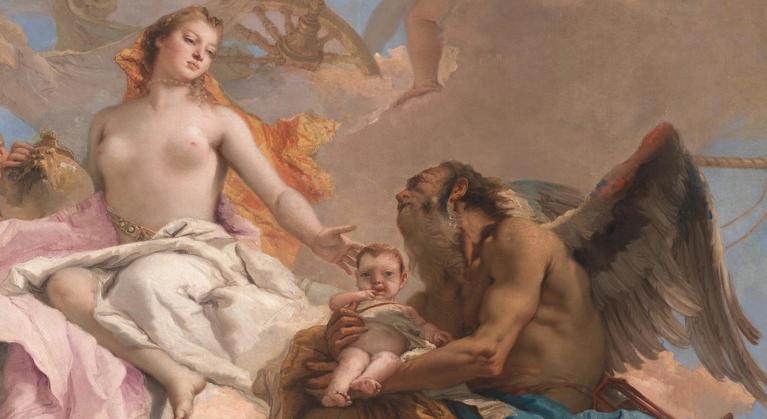
Until the 20th century, most art movements were not named by those that worked in that style. None more so than the Rococo. Buffeted by wars, revolutions and national chauvinism, Rococo is a style that has been defined as frivolous, thoughtless, shallow and inherently elitist by art historians.
Yet, artists working in this style were able to question how society defined class, gender and economic structures and it was its very light and airy qualities that were seen as a threat to more supposedly masculine and serious concerns.
We are joined by Jacqui Ansell in the second half of the session to discuss Rococo fashion.
Week 2: Publics
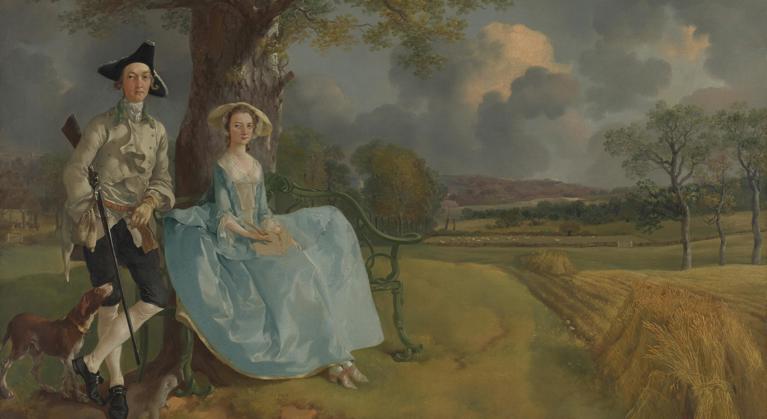
Prior to the 18th century, questions of taste were most usually considered alongside questions of social rank. It was assumed that members of the elite were best able to determine the worth of an artistic production, while most of the population were unable to understand what they might be looking at.
However, an increasingly prosperous and numerous middle class, and the inexorable commodification of art, meant that the patronage and appreciation of art was no longer confined to one section of society.
This week, we will explore how greater engagement with art altered the subjects depicted and the ways in which they were shown.
After the break, Dr Jenny Graham will speak on the cult of sensibility and changing representations of masculinity in 18th-century art, with reference to the paintings of Reynolds, Gainsborough, Chardin, Boucher and Greuze.
Week 3: England
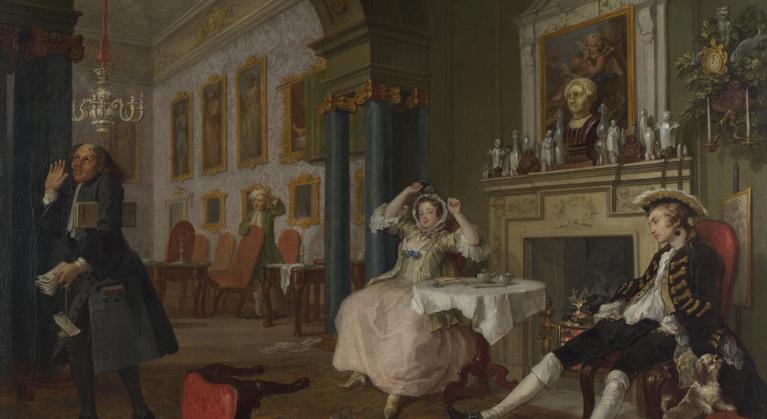
This week, we will be looking at how one country, Britain, sought artistic approaches that were not linked to Rococo, a style treated with suspicion as it came from France. This century saw the establishment of the Royal Academy and the confirmation of London as the premier location for art in the country due, in no small part, to its wealth.
We will look at the figureheads for both the establishment of the Royal Academy and the intellectualising of portraiture, Sir Joshua Reynolds and William Hogarth, advocate for a uniquely British style of painting, moraliser and, despite his unflinching eye, an optimist of the human condition.
After the break, we will explore the work of another British artist, George Stubbs, who revered his roots, and sought out other popular genres, mainly the painting of horses and animals. We will examine how Stubbs, ever the maverick, took a genre of painting that had been neglected and pushed it to the forefront of 18th-century British art.
Week 4: The Grand Tour
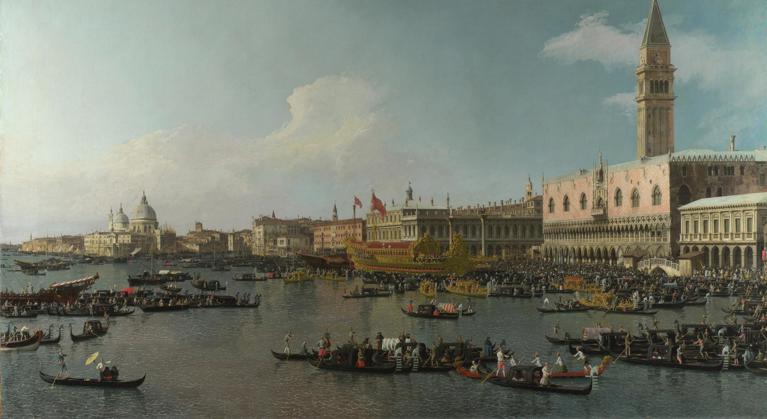
Artists and art lovers have always travelled to see works of art. However, in the 18th century, this process became codified and commercialised as young men, often in the company of a large entourage, began to travel across Europe as part of their education.
Inevitably, their journeys took in Rome, Venice and Florence. This session will look at how the Grand Tour, as it came to be known, was vital in disseminating ideals based on classical architecture, writing and sculpture. We will look specifically at the ways in which portraits produced by the Italian artist, Pompeo Batoni, catered to this market.
After the break, Dr Richard Stemp will deliver a talk entitled ‘Venice: Canaletto and Carriera’. Seen by many as the party capital of Europe in the 18th century, Venice was often the last important venue to be visited on the Grand Tour, and so the ideal place to get your last souvenirs. Nowadays they would be holiday snaps and selfies, but back then, Canaletto and Carriera were the go-to artists for 'vedute' (views) and portraits respectively, and we will see how the careers of each developed according to the demands of the tourists.
Week 5: The Enlightenment
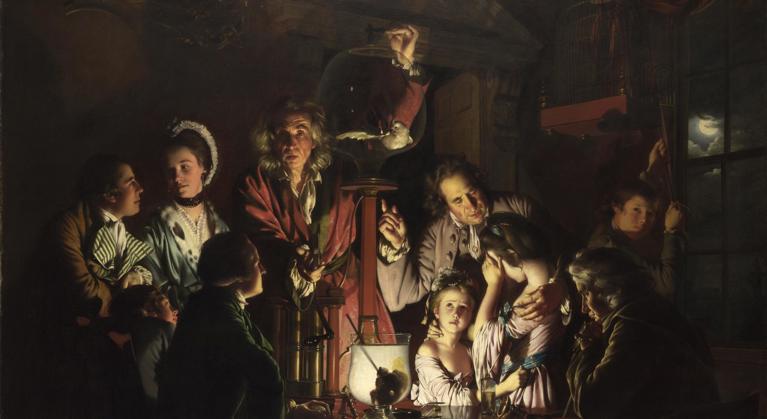
The Enlightenment is often understood as the triumph of scientific enquiry over mysticism and tradition. Across Europe, philosophers, writers, intellectuals and scientists increasingly wanted to understand the world around them and sought to do so through observation and experimentation. We will look at how these changes impacted the production of paintings and, in particular, paintings of volcanoes. We will also consider whether the break with mysticism and superstition was as final as many have claimed.
The second part of the session will focus on a single painting, perhaps the most complete visual presentation of the ideals, and problems, of the Enlightenment – Joseph Wright 'of Derby’s' ‘An Experiment on a Bird in the Air Pump’. We will see that Wright was both enlightened and a mystic.
Week 6: Neoclassicism: Revolution to Empire
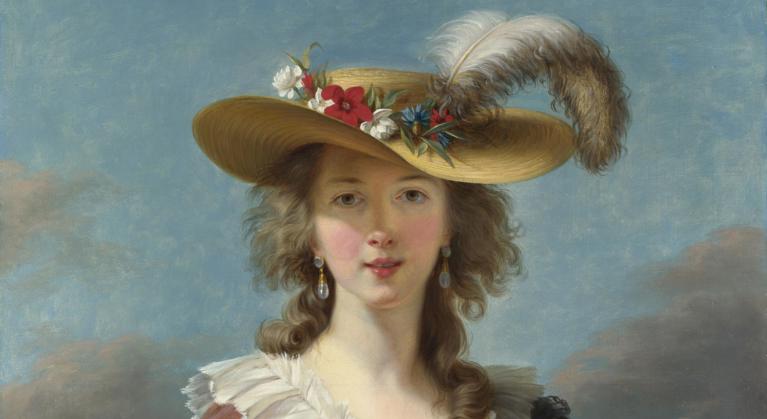
Increased exposure to artifacts excavated from classical Roman and Greek sites, encouraged a deeper interest in, and emulation of, classical art. If the Rococo was perceived as art for Francophile aristocrats, the new style was a clean, serious, supposedly masculine alternative.
Promoted by a range of dealers, antiquarians, artists and, in some cases, secret agents, Neoclassicism was the new art for the newly (and in some cases, already) wealthy. With the French Revolution it became a new style poised for a new regime. From the living rooms of newly constructed elite houses and estates in London and Berlin, Neoclassicism became the style of revolutionary anti-monarchists, as exemplified by the work of Jacques-Louis David. This session will chart the rise of this forward-and backward-looking style.
Fiona Alderton will conclude the course by exploring the link between the artist Elisabeth Louise Vigée Le Brun and the actress Sarah Siddons. She will then look further into the lives and careers of some of the most extraordinary women artists, patrons and sitters of the 18th century.
Your tutor
Dr Matthew Morgan is Museum Director of Turner's House in Twickenham and is an Associate Lecturer at Birkbeck, University of London. He has worked in the heritage sector for nearly 10 years, including at the Royal Collection and the National Gallery. Prior to that he was a Director at Christie’s. He has taught diverse audiences across the UK as well as making a series of short films which can be seen on YouTube.
Watch again
Can't make Wednesday evenings but don't want to miss out? No problem, you can watch again.
'Stories of art' sessions are recorded and made available to you for one week.
A video of the week's lecture will be uploaded and available for you to watch via your National Gallery account on Friday afternoons, in time for the weekend. Just be sure to watch it by the following Friday lunchtime, as it will be taken down on Friday afternoons.
Format
Each session lasts for 2 hours and includes a lecture delivered by course lecturer Matthew Morgan, followed by a short break and further discussion.
Time will be allowed for questions and discussion via Q&A.
Handouts will be available via your National Gallery account on Tuesday mornings.
Optional homework is provided to help you prepare for the following week's session.
Booking information
This is an online ticketed course hosted on Zoom. Please book a ticket to access the course. Only one ticket can be booked per account.
You will be emailed an E-ticket with instructions on how to access the course via your National Gallery account. All course information including your Zoom link, weekly handouts, and recordings will be available here.
Your link will be valid for the duration of the course.
Booking after the course has started
You are welcome to join the module at any point during its six-week run. However, please note that you will only be able to see the recording from the previous session, as these are taken offline after one week.
Testimonial from a previous participant
"I have so appreciated the way that all the tutors have made art history accessible and interesting in a friendly, down-to-earth way. Where jargon has been used it has been explained in handout glossaries as well as verbally, making it inclusive, whatever the previous knowledge – or not – of the participants. The optional homework on Padlet has helped me see myself as part of a group rather than learning in isolation. It has been something to look forward to each week."
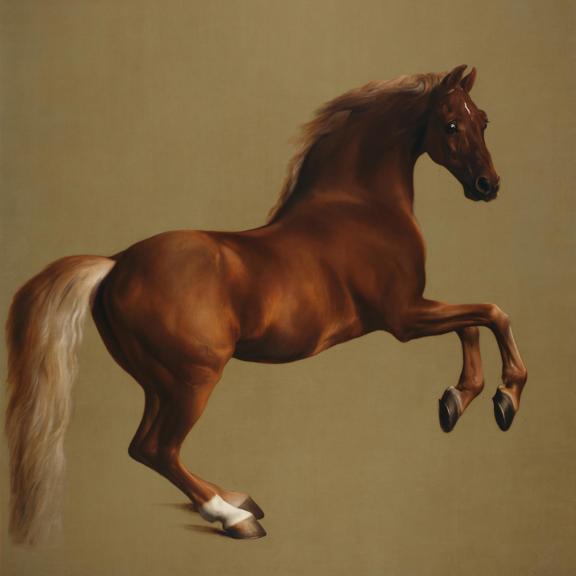
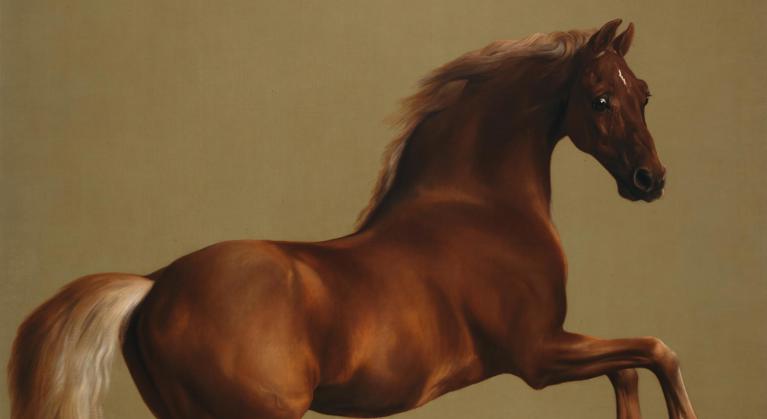
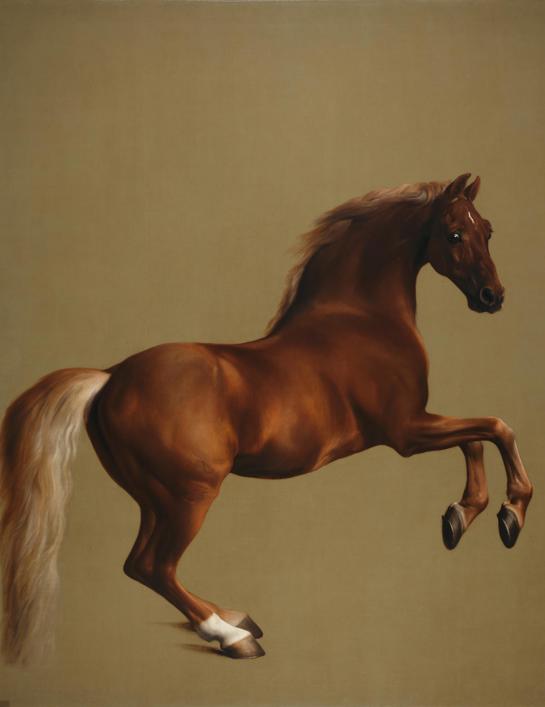
Stories of art: 1700-1800
Online tickets
Standard: £75
Concessions: £70.50
This is an online course, hosted on Zoom.
Please book a ticket to access the event. You will receive an E-ticket with instructions on how to access your online events, films and resources via your National Gallery account.
Please note, only one ticket can be booked per account. Bookings close one hour before the event.
Concessions are for full-time students, jobseekers, and disabled adults.
